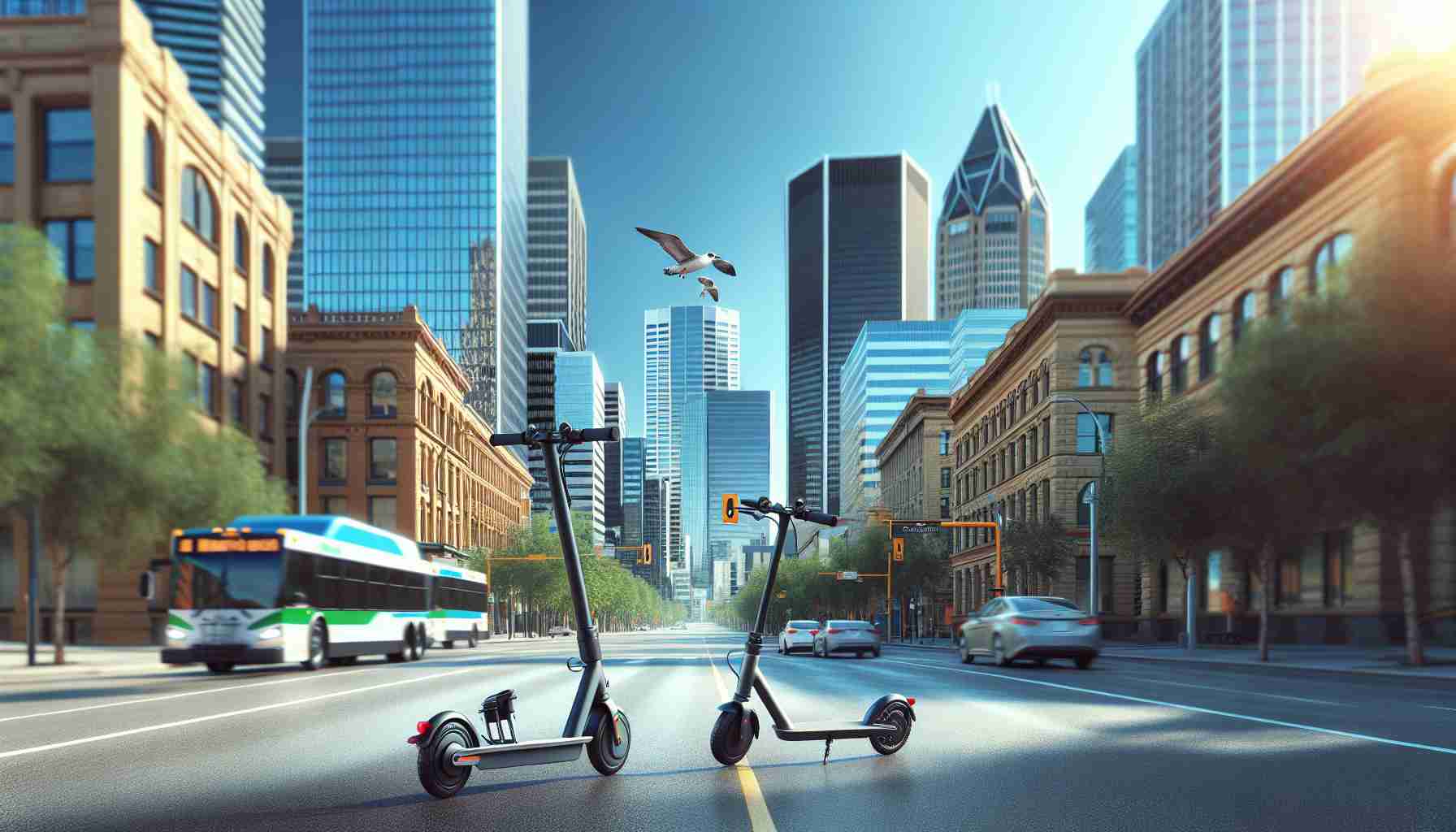The City of Edmonton has announced the return of e-scooters and e-bikes to the streets, this time with year-round availability. The shared micromobility program, which has been extended for another three years, aims to provide alternative modes of active transportation for residents.
To ensure the success of the program, the city has selected two vendors, Bird Canada and Lime, who have previously operated in Edmonton. The decision to make e-scooters and e-bikes available all year is part of the city’s efforts to promote public transit and active transportation, with a goal of reaching at least 50% of all city transportation.
With the introduction of a new vendor fee structure, the city hopes to address concerns related to fleet management, improper parking, and street clutter. The focus is on collaborating with e-scooter and e-bike vendors to promote safe riding habits and encourage Edmontonians to have fun while also riding with care.
Riders will have the freedom to use e-scooters and e-bikes on shared pathways, bike lanes, and roads, as long as the speed limit is 50km/h or lower. It is important to note that these vehicles are not permitted on sidewalks or park trails not maintained by the city. Additionally, the e-scooters and e-bikes will be equipped with features such as a working bell or horn, hand brake, headlamps, red tail lamps, and rear reflectors for enhanced safety.
To ensure riders are informed about parking and riding rules, relevant guidelines will be communicated through vendor apps and the official city website. By embracing shared micromobility options, Edmonton is taking a step towards a greener and more sustainable transportation future.
In conclusion, the return of e-scooters and e-bikes to Edmonton’s streets is an exciting development that offers residents year-round access to alternative transportation options. With proper adherence to rules and regulations, these micromobility solutions can contribute to a more eco-friendly and efficient city.
The e-scooter and e-bike industry has experienced significant growth in recent years, driven by the increasing demand for alternative transportation options. According to market forecasts, the global e-scooter and e-bike market is expected to reach a valuation of $41.98 billion by 2027, with a CAGR of 7.9% from 2020 to 2027. This growth can be attributed to factors such as rising environmental concerns, increasing urbanization, and advancements in battery technology.
One of the main issues related to the e-scooter and e-bike industry is the concern over safety. With the adoption of these vehicles on city streets, there have been instances of accidents and injuries. To address this issue, cities like Edmonton are implementing regulations and safety measures to ensure the well-being of riders and pedestrians. The requirement for e-scooters and e-bikes to have features such as working bells or horns, hand brakes, and adequate lighting is a step towards enhancing safety on the roads.
Another challenge for the industry is the issue of improper parking and street clutter. As the popularity of e-scooters and e-bikes grows, there have been instances of these vehicles being left in inappropriate places, causing inconvenience to pedestrians and other road users. To combat this problem, cities are working with vendors to develop solutions that encourage responsible parking and minimize street clutter. The introduction of a new vendor fee structure, as seen in Edmonton, aims to incentivize proper fleet management and ensure the availability of vehicles in designated areas.
While the introduction of e-scooters and e-bikes offers many benefits, it also poses regulatory and infrastructure challenges. Cities need to invest in appropriate infrastructure, such as dedicated bike lanes and charging stations, to support the growing demand for these vehicles. Furthermore, regulations regarding speed limits, areas of operation, and rider behavior need to be clearly defined and enforced to ensure a safe and harmonious coexistence of e-scooters, e-bikes, and other road users.
To stay updated on the latest regulations and guidelines for riding and parking, users can refer to the official city website and the relevant vendor apps. These platforms provide essential information and resources to educate riders about responsible riding habits. By actively promoting and embracing shared micromobility options, cities like Edmonton are taking a step towards a greener and more sustainable transportation future.
Related links:
– Bird Canada
– Lime







